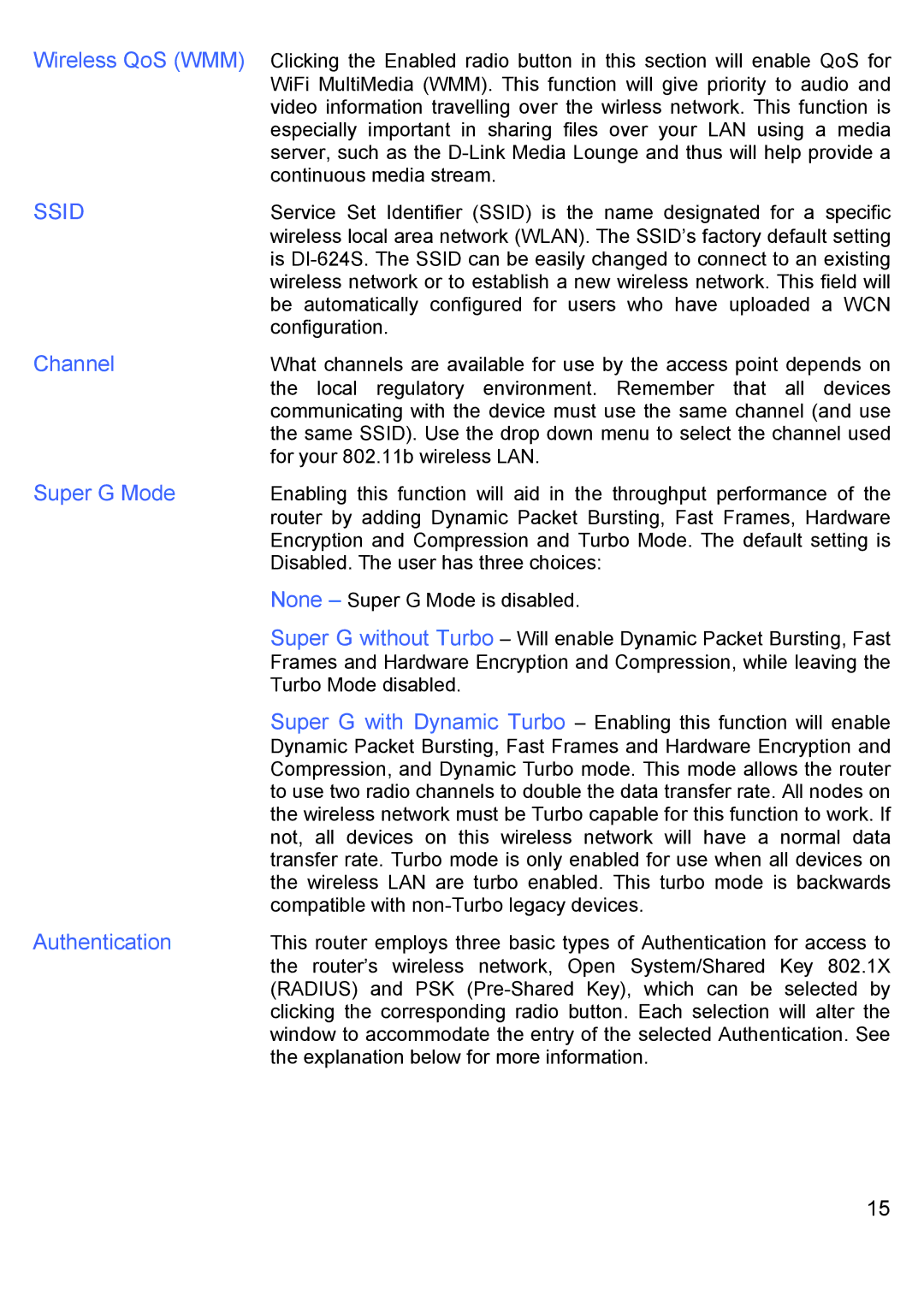Wireless QoS (WMM) | Clicking the Enabled radio button in this section will enable QoS for |
| WiFi MultiMedia (WMM). This function will give priority to audio and |
| video information travelling over the wirless network. This function is |
| especially important in sharing files over your LAN using a media |
| server, such as the |
| continuous media stream. |
SSID | Service Set Identifier (SSID) is the name designated for a specific |
| wireless local area network (WLAN). The SSID’s factory default setting |
| is |
| wireless network or to establish a new wireless network. This field will |
| be automatically configured for users who have uploaded a WCN |
| configuration. |
Channel | What channels are available for use by the access point depends on |
| the local regulatory environment. Remember that all devices |
| communicating with the device must use the same channel (and use |
| the same SSID). Use the drop down menu to select the channel used |
| for your 802.11b wireless LAN. |
Super G Mode | Enabling this function will aid in the throughput performance of the |
| router by adding Dynamic Packet Bursting, Fast Frames, Hardware |
| Encryption and Compression and Turbo Mode. The default setting is |
| Disabled. The user has three choices: |
| None – Super G Mode is disabled. |
| Super G without Turbo – Will enable Dynamic Packet Bursting, Fast |
| Frames and Hardware Encryption and Compression, while leaving the |
| Turbo Mode disabled. |
| Super G with Dynamic Turbo – Enabling this function will enable |
| Dynamic Packet Bursting, Fast Frames and Hardware Encryption and |
| Compression, and Dynamic Turbo mode. This mode allows the router |
| to use two radio channels to double the data transfer rate. All nodes on |
| the wireless network must be Turbo capable for this function to work. If |
| not, all devices on this wireless network will have a normal data |
| transfer rate. Turbo mode is only enabled for use when all devices on |
| the wireless LAN are turbo enabled. This turbo mode is backwards |
| compatible with |
Authentication | This router employs three basic types of Authentication for access to |
| the router’s wireless network, Open System/Shared Key 802.1X |
| (RADIUS) and PSK |
| clicking the corresponding radio button. Each selection will alter the |
| window to accommodate the entry of the selected Authentication. See |
| the explanation below for more information. |
15
